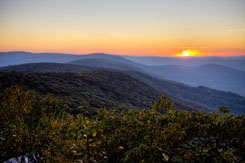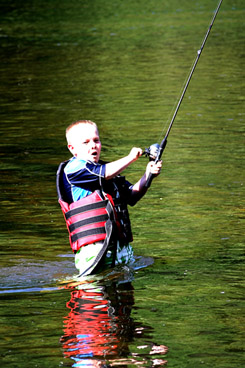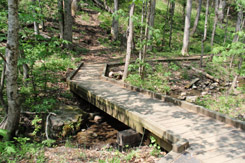
Best Management Practices
Best Management Practices (BMPs) minimize the impacts of development on the natural environment and generally strive to support conservation goals. Many are specific to certain actions, such as stormwater management or forestry techniques. The BMPs listed below are some examples of practices that could be implemented to accomplish the goals established by the NRV Steering Committee..
- Integrate all relevant planning efforts, including transportation, recreational, land use, and housing planning.
- Encourage the use of agricultural and forestal districts.
- Encourage cluster zoning.
- Identify urban development areas in all localities, not just those required to utilize them.
- Protect stream buffers through zoning and subdivision ordinances.
- Require new developments to have and meet recreational and open space minimums and connectivity.
- When possible, avoid development in natural hazards areas. Utilize Low Impact Development techniques when development is unavoidable.
- Encourage the development of local and/or regional "Transfer of Development Rights" or "Purchase of Development Rights" programs.
- Identify specific areas where conservation easements are encouraged through zoning and future land use planning.
- Take advantage of recreational planning and acquisition as an opportunity to conserve natural spaces into the future.
- Develop incentives to encourage low impact development across the region.
- Encourage stream restoration projects.
- Encourage land owners to engage in agricultural BMP programs to preserve water quality.
- Encourage development of value-added processes in the region for agricultural and forest products, making these natural lands more valuable to landowners.
- Engage forest land owners in the development of Forest Stewardship Plans with the Department of Forestry.
- Support regional tourism efforts that highlight the region's cultural assets and outdoor recreational opportunities.
- Encourage tourism zones, specifically focused on those segments that conserve natural and cultural resources, such as agri-tourism, arts/cultural tourism, and recreation-based tourism. Create local incentive programs that promote these types of tourism.
- Encourage Urban Tree Canopy analyses in communities to assist in setting goals for urban tree cover and urban green infrastructure.
- Conduct outreach to other segments of the community to share information and engender support for conserving regional assets.


